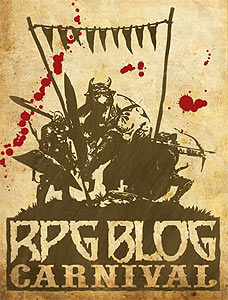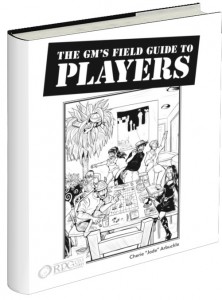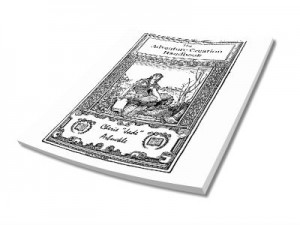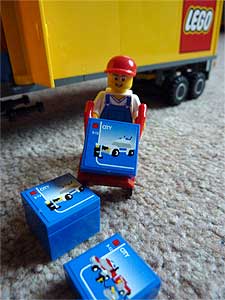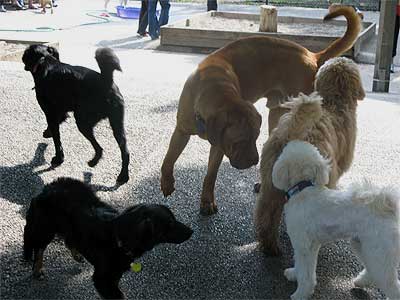
At some point in your roleplaying career, someone will ask “What is this roleplaying thing you do?” If you’re like most of us, your brain freezes up and you’re really not sure even where to begin. Tabletop RPGs can be difficult to explain to the uninitiated. Below is a four-step method for explaining tabletop RPGs to someone who’s never played before.
1. It’s a game
Surprisingly, this is something people need to be told. You’d think that the name of the hobby (“roleplaying game”) would give them a clue, but sometimes you just need to say it. Because of the “Satanic Panic” of the ’80s and ’90s, (which is a post all to itself), some people have formed an idea of roleplaying that is so far from reality, you wonder how they got there.
Explain that tabletop RPGs are cooperative games, ones that are not about winning or losing. Tell them that these are games where the players work together to meet a pre-determined victory condition. Or tell them it’s like Game of Thrones, where they get to be one of the characters. Or that it’s a story where the players get to decide what happens. Or it’s a ‘choose your own adventure’ story, only multiplayer. Or, yes, that it’s like ‘Cops and Robbers’, with rules to resolve arguments, if you must.
Emphasize this point that it’s a game. Flat out tell them that you’re not performing magic rituals in the basement or playing with Ouija boards, and no one gets to learn real magic spells when they reach fourth level. You’re just playing a game.
2. Why do you play?
Many people have a hard time understanding why someone would want to play a game without winners or losers. Explain that there is winning and losing, it’s just that you do it as a cooperative group. Even games where the characters may be playing against one another, such as Amber Diceless Roleplaying or Vampire: the Masquerade, you still come together to solve a problem set by the game master (or dungeon master) that no one character can solve alone.
Stress that these games are fun. Who’d want to play a game that wasn’t fun? No one. You may get some push back on this, especially from those who are closest to you. “But last week you came home sad because another character had died” or “you were really furious last time,” they may say. Explain that while individual sessions may have you angry, sad, or some other feeling, the overall game itself is still fun.
3. There’s a game for everybody
Most people who aren’t tabletop gamers don’t understand that there’s more to RPGs than D&D. They don’t know that there is literally a game out there for everyone. Let them know that there are RPGs for people who like science fiction (Traveller, Firefly, Star Wars), history (Boot Hill, Ars Magica, Legend of the Five Rings), modern military (Modern War, FIST), steampunk (Castle Falkenstein, Space 1889), cyberpunk (Cyberpunk, Carbon 2185), kids (Hero Kids, Starport, My Little Pony), horror (Call of Cthulhu, World of Darkness, Chill)…if you can imagine it, someone has written an RPG for it. There are even RPGs specifically for Christians (Holy Lands, DragonRaid, Testament).
4. Invite them in
Invite them to watch a game session. If you don’t want them watching your game (it can make some people incredibly self-conscious), suggest they watch one of the online games, such as Critical Role. But there are others and it’s particularly helpful if you can find one of these broadcasts that’s using the system you’re playing. If you want something other than D&D, check out Relics and Reliquaries, which shows how versatile the 5e system is. Geek and Sundry’s “Starter Kit” series features a mini-campaign of various systems, including 7th Sea, for those who like pirates and other sea-faring adventures. Also, check out Encounter Roleplay which has professionally produced multiple campaigns from multiple systems, including Call of Cthulhu, Star Wars, and Vampire: the Masquerade.
If you’re up to it, you can even take the people or person you’re talking to through a mini-session right there and then. Tell them to imagine they’ve wandered into a town (or dungeon, or castle, or spooky forest). Describe their setting in detail, let them wander, and react to the world for a little while, then give them an encounter and ask them what they want to do. Don’t force them into combat–just let them respond as they want to. Then have them walk back to where they actually are. Tell them they’ve played their first RPG.
It’s a game?
Finally, one of the best descriptions I’ve seen is What is a Roleplaying Game? by Epidiah Ravachol. It’s actually a mini roleplaying game you can run in an instant to explain to someone what roleplaying it. If you reformat the text, you might be able to fit it on a folding business card. Feel free to distribute this, as long as you credit Ravachol.
If you liked this, also check out:


